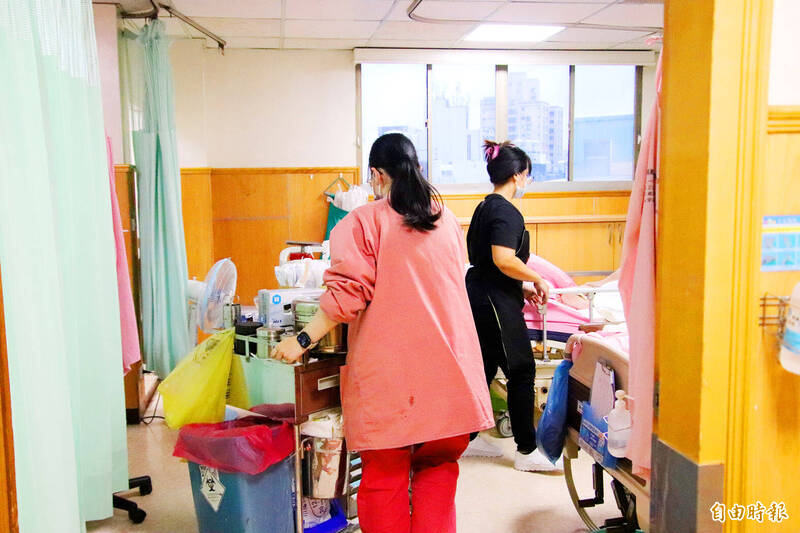《TAIPEI TIMES》Cabinet unveils plan to boost nursing workforce

Nurses work at Da An Hospital in Hsinchu County’s Jhubei City on June 1. Photo: Huang Mei-chu, Taipei Times
ADDRESSING SHORTAGE: The policy has measures to train more nurses, increase the number of licensing exams and monitor their professional development
By Chung Li-hua and Jonathan Chin / Staff reporter, with staff writer
The Executive Yuan yesterday approved a comprehensive plan to increase the nursing workforce and improve the quality of care at hospitals.
Ministry of Health and Welfare officials detailed the plan at a news conference following a Cabinet meeting.
The plan aims to tackle the nursing shortage by improving the professional education, working conditions and income of nurses, the officials said.
The policy consists of measures to train more nurses, increase the number of licensing exams and create an integrated platform to track the professional development of nurses and data from licensing tests, Department of Nursing and Healthcare Director-General Tsai Shu-feng (蔡淑鳳) said.
The measures include incentives for hospitals to reach nursing staff-to-patient ratio targets, certifying nurse-friendly workplaces, a mentorship program and utilizing smart technology to reduce the burden on staff, Tsai said.
They also include scaling up an ongoing inpatient care improvement program, rewards for night-shift nurses, mechanisms for professional self-management, an increase in the number of publicly employed nurses, and improvements to wage structure and transparency, she said.
Raising the national nurse-to-patient ratio is crucial for the quality of care, as this has a decisive effect on workload and nurse retention rates, a ministry spokesperson told the news conference.
An incentive program for hospitals to reach staff-to-patient ratio targets was launched on March 3 as part of efforts to achieve that goal, the spokesperson said.
The program rewards hospitals for achieving ratios as an average of the staffing levels across nursing shifts, but would transition to a model that calculates the ratio of each shift separately, they said.
Incentives for nurses to work nights would be offered to ensure that members of the profession can have a family and keep working, they said.
This measure might reduce the number of nurses leaving the workforce to get married, they added.
The ministry plans are key for preparing Taiwan’s medical care system to handle an aging population, Premier Cho Jung-tai (卓榮泰) was cited as saying at the Cabinet meeting by ministry officials.
The ministry is implementing a NT$4 billion (US$123.15 million) plan to subsidize the salaries of evening and night-shift nurses, and establish a permanent nighttime staff, Deputy Minister of Health and Welfare Lin Ching-yi (林靜儀) said.
The National Health Insurance is the program’s source of funding, but the ministry is pushing the Executive Yuan to allow it to use the general budget, Lin said.
Evening and night-shift nurses working at district-level hospitals receive a NT$500 and NT$900 bonus per shift respectively, she said.
These bonuses are NT$550 and NT$950 respectively at regional hospitals, and NT$600 and NT$1,000 respectively at medical centers, she said.
Multiple ministries worked together to create an integrated system in which nurse training and certification are aligned to increase the share of students who passed the exams to become licensed practitioners, Tsai said.
Starting this year, the ministry expects to increase the number of nursing students by 10 percent each year until 2030, she said.
That means there are to be 71,000 additional nursing school graduates, Tsai said.
Assuming that 60 percent of graduates join the workforce — as is the case now — it would add 42,000 practicing nurses, she said.
The adjustments of policy, working conditions and pay strategy are intended to reduce the loss of nurses to 4,000 per year from the current 8,000, she said.
By 2030, the ministry expects retention rates to improve enough that the nation’s nursing staff would increase by 70,000, she said.
新聞來源:TAIPEI TIMES














